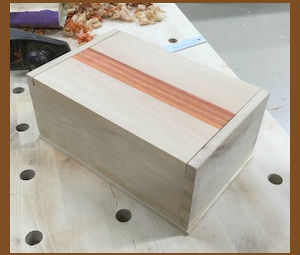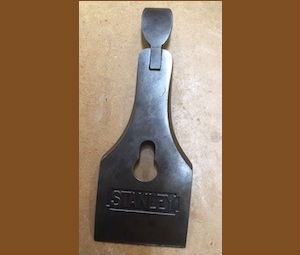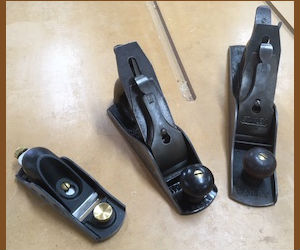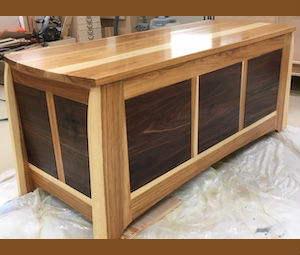22 October 2019 Hits: 3909
 “Handcut Dovetails" Using Hand Tools
“Handcut Dovetails" Using Hand Tools
If you follow my blog, you know I’ve recently taken quite an interest in hand tools, especially planes. Over the past twelve years, I’ve perfected many of my woodworking skills but I’ve relied almost exclusively on power.
I’ve always wanted to improve my hand tools skills, but I’ve always had a personal project or commission I wanted or needed to complete first. I didn’t want to take the time to stop and learn to use hand tools when I knew I could get the job done with my power tools.
20 August 2019 Hits: 4216
 “Vintage Stanley" Facts About Old Planes
“Vintage Stanley" Facts About Old Planes
There’s so much information on the internet as well as written sources on Stanley planes it would be silly for me to try to write up some lengthy blog on Stanley planes. Instead, I’ll just point out a few interesting facts and if you really want to dig into it, I’ll provide a list of some of the best sources for further research.
Stanley Planes has its origin in 1843 when Frederick T. Stanley founded The Stanley Works. Located in New Britain, Connecticut, his company manufactured hinges, bolts and other door hardware. As time went on there was the merging of some businesses and the take over of others, but by the late 1860s metal planes became popular and Stanley managed to corner the market. Leonard Bailey was the greatest contributor to Stanley’s success. His 1867 patents for plane improvements contributed to the beginning of what we know of today as Stanley type planes. There are different styles of Stanley planes, but Bailey is by far the most common. Another style is the Bedrock, and I find the origin of the Bedrock a bit confusing. In some references I’ve seen it listed as one of Leonard Bailey’s patents; in other sources, the patents are listed under other names. The differences between it and the Bailey seem to be pretty minimal with most having to do with the frog and the way it mates with the bottom casting. Most references to the Bedrock indicate it is a slightly better style, but I’ve never compared the two. Currently, Lie-Nielsen owns the patient and makes very high quality and expensive Bedrock style planes. More information on the Bedrock can be found in the references below.
12 August 2019 Hits: 3687
 “New Hand Tools" Veritas and Two Stanleys
“New Hand Tools" Veritas and Two Stanleys
Over the past twelve years, I’ve been perfecting my furniture building skills and I think I’ve gotten pretty good at it, but I’ve left out a critical piece of the woodworking experience and perhaps the joy. That’s the use of hand tools. I’ve obviously used some hand tools -- some chisels, a block plane, plenty of sandpaper, and a handsaw now and then, but I’ve never perfected my skills especially with bench plans. I’ve been able to do that because as Christopher Schwarz says in his book, HandPlane Essentials “Power tools allow the new woodworker to accomplish great feats of furniture building when our skills are limited.”
It’s come to that point in my woodworking when I’d really like to be proficient with hand tools as well. It all started when I jointed up several large panel pieces in a row. Without the advanced smooth capabilities of a drum sander, I was reduced to the handheld belt sander (very dangerous) and tons and tons of card scraping to get a smooth surface because I didn’t have any skills at bench planes.
07 August 2019 Hits: 3745
 “Hickory & Walnut Blanket Chest" Hickory with Walnut Panels
“Hickory & Walnut Blanket Chest" Hickory with Walnut Panels
I just completed a new blanket chest based on a design I found in the January/February 2009 edition of "Fine Woodworking." I made every effort to joint together nicely matched boards especially for the walnut panels. I'm a very pleased with how it turned out.
I built it in the mist of two house moves, so I didn't take photos along the way, but it was a great project. Some of the joinery was a bit of a challenge because of the angles of the legs, but it went together well after I got it all marked out.